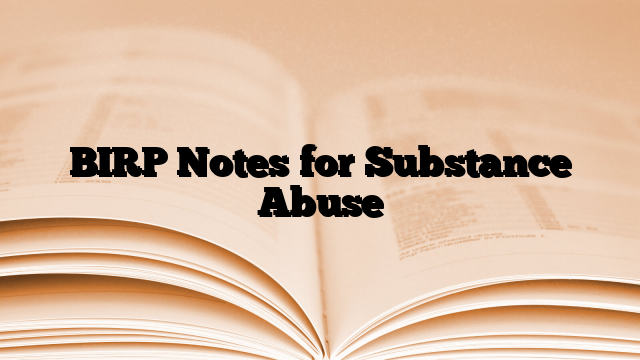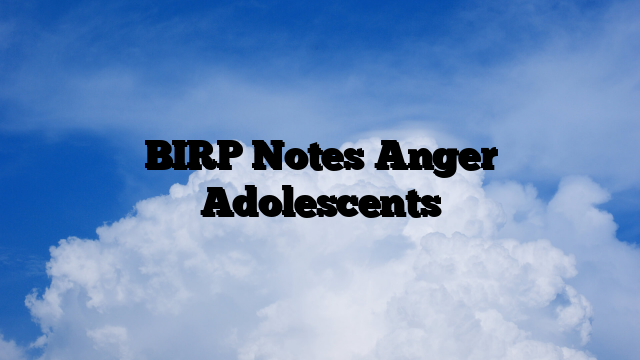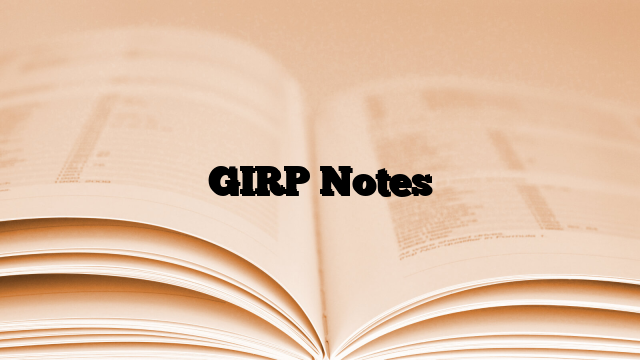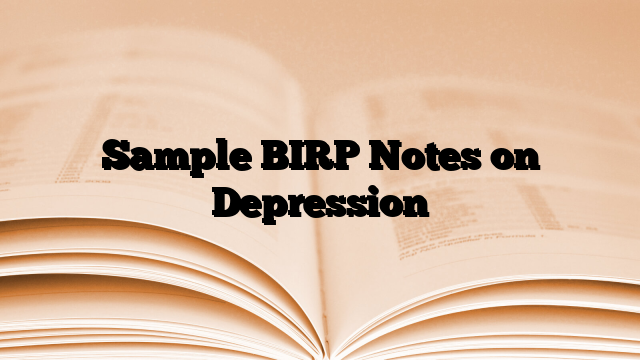In mental health care, progress notes are more than just routine paperwork, they are important records that reflect the therapeutic journey, support treatment planning, and ensure continuity of care. Whether you’re a seasoned clinician or just starting out, the language you use in your documentation can make a significant difference in the clarity and professionalism of your notes.
Using precise clinical language is essential not only for conveying a client’s status accurately but also for maintaining objectivity, ensuring legal protection, and facilitating collaboration with other healthcare professionals. Well-documented notes provide insight into a client’s progress, justify treatment decisions, and can even impact insurance reimbursement.
In this guide, we’ll explore key clinical words and descriptors commonly used in progress notes to help you enhance your documentation, improve communication, and support more effective mental health care.
Why Clinical Words Matter in Progress Notes
In mental health documentation, the words you choose aren’t just about describing what happened in a session, they carry clinical, legal, and professional weight. Using objective language and accurate clinical descriptors helps ensure your notes are both effective and meaningful across the broader healthcare ecosystem.
The Difference Between Lay Language and Clinical Descriptors
Using everyday (lay) language might feel more natural, especially when writing quickly, but it often lacks the precision and neutrality needed in professional documentation. For example:
- Lay language: “The client freaked out when talking about their ex.”
- Clinical language: “The client became visibly distressed and tearful when discussing a past relationship.”
Clinical descriptors are neutral, specific, and measurable, helping you avoid subjective judgments and emotionally charged phrasing. They focus on observable behaviors and client-reported experiences without assumptions or interpretations.
Clear, Objective Communication Across Professionals
Your progress notes may be read by psychiatrists, primary care physicians, case managers, or legal professionals. Using clear and consistent clinical language allows these professionals to quickly understand the client’s status, treatment goals, and progress, without needing extra clarification.
For instance:
- Rather than saying “The client seemed off today,” you might write “Client appeared withdrawn, with limited eye contact and slowed speech.”
- Instead of “Client was doing better,” say “Client reported reduced anxiety and demonstrated improved emotional regulation during the session.”
This level of detail supports clinical accuracy and ensures continuity of care across a multidisciplinary team.
The Role of Clinical Language in Insurance Reimbursement and Compliance
Using appropriate terminology is not just best practice, it’s often necessary for insurance documentation and legal compliance. Insurers look for certain keywords and structured language that demonstrate:
- The medical necessity of treatment
- Specific symptoms or diagnoses
- Evidence of client progress or setbacks
Without clear clinical wording, you risk claim denials or requests for additional documentation. On a compliance level, vague or emotionally charged notes can create legal vulnerabilities and reduce your protection in the event of an audit or review.
In short, using clinical words in your progress notes ensures your documentation is objective, professional, and aligned with industry standards, benefiting both your clients and your practice.
Describing Client’s Mood and Affect
One of the most important aspects of writing progress notes is capturing the client’s emotional state, specifically their mood (what they report feeling) and affect (what you observe). Using the right mood descriptors ensures you accurately reflect how the client presented during the session without bias or assumption.
Common Clinical Terms for Mood and Affect
Below are commonly used descriptors that can help you describe a client’s mood and affect with clinical precision:
- Flat – Little to no emotional expression; monotone voice and blank facial expression.
- Labile – Rapid and extreme changes in mood; e.g., laughing one moment, crying the next.
- Euphoric – Exaggerated sense of well-being or elation, often disproportionate to the context.
- Anxious – Exhibiting signs of worry, nervousness, or unease.
- Irritable – Easily annoyed or provoked; visibly short-tempered.
- Tearful – On the verge of or actively crying; emotionally overwhelmed.
These descriptors are clinically recognized and help communicate the client’s emotional condition clearly and succinctly.
Tips for Choosing the Right Descriptor
- Observe, don’t interpret. Describe what you see, not what you think it means. For example, instead of writing “Client was upset,” note specific behaviors: “Client was tearful and avoided eye contact.”
- Use objective, neutral language. Avoid emotionally loaded words like “dramatic” or “hysterical.” Stick to terms that are recognized in clinical settings.
- Note congruence. Mention whether the client’s affect is congruent with their stated mood. For example: “Client reported feeling fine, but affect appeared flat and disengaged.”
- Be specific. If a client shifts emotional states during a session, document that shift. For example: “Client initially appeared withdrawn but became tearful and agitated when discussing recent family conflict.”
Example in a Progress Note
“Client appeared tearful and anxious during the session. Affect was constricted but congruent with reported feelings of stress regarding an upcoming court appearance.”
By using well-chosen descriptors, you create a more accurate and clinically valuable record of the session that can support treatment decisions and improve communication with other professionals.
Describing Behavior and Appearance
In therapy documentation, describing a client’s observable behavior and physical appearance is essential to painting an objective picture of their presentation. This section of your progress note should reflect exactly what you see and hear, without assumptions or subjective interpretation.
Common Descriptors for Behavior and Appearance
Here are some frequently used terms that can help you document behavior and appearance clearly and professionally:
- Restless – Repeated movements such as fidgeting, pacing, or inability to sit still.
- Cooperative – Willing to engage and follow guidance or instructions during the session.
- Withdrawn – Emotionally or socially disengaged; limited interaction or verbal expression.
- Agitated – Irritable, tense, or displaying signs of internal distress (e.g., pacing, clenched fists).
- Disheveled – Poor grooming or clothing that appears unkempt, possibly indicating neglect or distress.
- Attentive – Focused, responsive, and actively participating in the session.
Importance of Objective Description
Progress notes should stick to facts and observations, not interpretations. This helps maintain professional tone and protects both the therapist and client from miscommunication.
- ❌ Avoid: “Client looked like they had a rough night.”
- ✅ Use: “Client arrived with uncombed hair and wrinkled clothing; appeared fatigued and less engaged than in previous sessions.”
Even small details can offer clinical insight, such as changes in hygiene, posture, or tone of voice, especially when tracked over time.
Example in a Progress Note
“Client arrived late, appeared disheveled and restless. Made minimal eye contact and shifted in their seat frequently. Verbal responses were brief but coherent.”
This kind of description allows future readers, including other clinicians or auditors, to get a clear sense of the client’s presentation without speculation.
Accurately documenting a client’s thought process and thought content is essential for assessing their cognitive functioning and identifying potential risks or clinical concerns. This part of the progress note helps differentiate between typical thinking patterns and those that may indicate a mental health disorder.
Describing Thought Process
The thought process refers to how a client organizes and expresses their ideas, not the content of what they say, but how they say it. Below are common clinical descriptors:
- Logical – Ideas are coherent and flow in a sensible order.
- Tangential – Thoughts veer off-topic and do not return to the original point.
- Circumstantial – Thoughts are overly detailed and delayed in reaching the point, but eventually circle back.
- Flight of ideas – Rapid, continuous shifting from one idea to another, often seen in manic states.
These descriptors are useful for recognizing disruptions in cognitive organization, which may signal conditions like bipolar disorder, schizophrenia, or severe anxiety.
Describing Thought Content
The thought content describes what the client is thinking or expressing. Key terms include:
- Delusional – Holding false, fixed beliefs despite evidence to the contrary.
- Ruminative – Persistent and repetitive thinking about distressing topics.
- Suicidal ideation – Thoughts of self-harm or suicide, which should always be documented with great care and detail.
Other relevant descriptors may include: obsessive, paranoid, intrusive, grandiose, depending on what the client discloses or what you observe.
Objective and Clinical Observations
It’s important to document what is said and how it is said, without inserting assumptions or judgments. For example, avoid phrases like “Client was all over the place” or “Client sounded crazy.” Instead, use clinically accepted terminology supported by observations.
Example in a Progress Note
“Client’s speech was tangential with signs of ruminative thought patterns related to unresolved family conflict. No delusional thinking or suicidal ideation reported during the session.”
This kind of documentation not only improves clinical clarity, but also ensures your notes meet professional and ethical standards, especially in cases where risk or diagnostic clarity is involved.
Documenting Speech and Communication
A client’s speech and communication style can offer valuable insights into their mental and emotional state. Documenting these observations using clear clinical terms adds precision and depth to your progress notes. Factors such as speech rate, tone, volume, and fluency often reflect underlying cognitive or emotional concerns.
Key Descriptors by Category
To maintain objectivity, it’s helpful to break down speech observations into specific, clinically relevant categories:
🔁 Rate
- Rapid – Speech is fast-paced, often making it difficult to interrupt.
- Slow – Speech is drawn out, may reflect depression or fatigue.
- Pressured – Client feels compelled to speak quickly, often seen in manic states.
🔊 Volume
- Loud – Voice is abnormally high in volume; may seem intrusive or aggressive.
- Soft – Low volume, possibly indicating anxiety or lack of confidence.
- Monotone – Lacks inflection or emotional variation.
🔤 Fluency and Rhythm
- Stammering – Speech includes involuntary pauses or repetitions.
- Slurred – Words are mumbled or hard to understand, possibly due to medication, fatigue, or intoxication.
- Clear – Speech is articulate and easy to understand.
Why These Observations Matter
Changes in how a client speaks can point to:
- Cognitive impairments
- Emotional distress
- Neurological concerns
- Medication side effects
Recording these changes over time also helps track progress or deterioration and supports accurate diagnosis and treatment adjustments.
Example in a Progress Note
“Client communicated clearly but with slow speech and flat tone. Volume was soft, and responses were brief. No signs of pressured or slurred speech observed.”
This level of detail gives a professional, measurable summary of the client’s verbal communication, useful for both clinical evaluation and treatment planning.
Describing Orientation and Cognition
Assessing and documenting a client’s orientation and cognitive functioning is an essential part of any mental health evaluation. These observations provide insight into how well a client is processing information, understanding their environment, and making decisions, all of which are critical to determining treatment needs and potential risks.
Orientation: Person, Place, Time, and Situation
Orientation refers to a client’s awareness of who they are, where they are, the current time/date, and what is happening. Clinicians often assess this using the “oriented x4” framework:
- Oriented x1 – Aware of person (knows who they are)
- Oriented x2 – Aware of place (knows where they are)
- Oriented x3 – Aware of time (knows date, day, season, etc.)
- Oriented x4 – Aware of situation (understands why they are in therapy, what’s going on)
Common descriptors:
- Oriented x4 – Fully aware in all four areas
- Confused – Unclear or uncertain about environment or context
- Disoriented – Lacking awareness in one or more areas (e.g., disoriented to time)
Cognitive Functioning
Cognitive functioning involves a client’s ability to think, reason, remember, and concentrate. This includes both self-reported symptoms and observable behavior. Use clinical terms such as:
- Impaired judgment – Making risky or poor decisions without understanding consequences
- Poor concentration – Easily distracted, difficulty staying focused
- Memory intact – Able to recall information appropriately
- Delayed processing – Takes longer than usual to respond or answer
- Distractible – Frequently loses track of thoughts or tasks
Keep It Objective
Describe what you observe, not what you assume. For example, instead of writing “Client wasn’t paying attention,” you might say:
“Client required frequent redirection and had difficulty maintaining focus on discussion topics.”
This paints a more accurate picture and avoids subjective labeling.
Example in a Progress Note
“Client was oriented to person and place but not time. Displayed adequate memory for recent events but showed signs of poor concentration and required repetition of questions.”
Such phrasing ensures your documentation remains clear, measurable, and clinically useful, especially when working with clients experiencing cognitive challenges or changes in mental status.
Intervention Words and Therapist Actions
Documenting what you did as the therapist is just as important as describing the client’s behavior. Using clear and professional intervention words helps communicate your clinical techniques, support treatment goals, and demonstrate the therapeutic value of the session.
Common Clinical Verbs to Use in Progress Notes
These action verbs are widely accepted in clinical documentation and can be adapted for various therapy modalities:
- Encouraged – Prompted the client to express, reflect, or take action
- Validated – Acknowledged and affirmed the client’s feelings or experiences
- Explored – Guided deeper discussion around thoughts, emotions, or patterns
- Challenged – Prompted the client to question maladaptive beliefs or assumptions
- Guided – Directed the client through an exercise, discussion, or technique
- Redirected – Helped the client shift focus or behavior in a more constructive direction
- Reflected – Mirrored back the client’s words or emotions for insight
- Taught/Trained – Introduced a skill, technique, or coping strategy
These terms help clearly outline your role and the methods used in session without being vague.
How to Reflect Therapist Interventions
A strong progress note goes beyond “Client talked about their week.” You want to show how you supported, structured, or influenced the session.
Instead of:
“We talked about anxiety today.”
Try:
“Therapist explored client’s recent anxiety triggers and guided them through a grounding exercise. Client was encouraged to practice the technique between sessions.”
This type of documentation demonstrates both therapeutic engagement and progress toward goals, which is valuable for clinical clarity, insurance audits, and team collaboration.
Example in a Progress Note
“Therapist validated client’s feelings and guided them in reframing negative thoughts. Encouraged client to practice self-compassion and introduced a journaling prompt to reinforce progress.”
By using purposeful and descriptive intervention words, your notes become more impactful, professional, and aligned with best practices in mental health documentation.
Describing Client Progress
An essential part of every progress note is documenting how the client is moving toward their treatment goals, or where challenges may still exist. Using clear, clinical language to describe client progress helps track change over time, supports outcome measurement, and justifies continued care when needed.
Words to Describe Progress
Use these objective terms to capture the client’s progress (or lack thereof) in a way that’s both specific and professional:
- Improving – Making steady gains in insight, skills, or symptom reduction
- Deteriorating – Showing signs of decline in functioning or increase in symptoms
- Stable – No significant change, but maintaining current level of functioning
- Fluctuating – Progress varies from session to session; inconsistent patterns
- Resistant – Unwilling or hesitant to engage in the therapeutic process
- Motivated – Actively working on goals with energy and intention
These descriptors help tell the story of how the client is responding to treatment and whether adjustments might be necessary.
Why This Matters
Clearly documenting progress allows clinicians to:
- Monitor whether interventions are effective
- Update treatment plans based on client needs
- Communicate changes with other professionals or insurance providers
- Demonstrate clinical improvement (or lack thereof) for compliance purposes
Example in a Progress Note
“Client showed improved engagement with minimal prompting. Reported practicing coping skills between sessions and demonstrated increased insight into relationship triggers. Progress toward treatment goals appears steady.”
Including progress notes like this makes it easy for any clinician or reviewer to understand how the client is doing, and whether the current course of therapy is working.
Strength-Based Clinical Language
While it’s important to document challenges and symptoms, it’s equally essential to highlight a client’s strengths and positive attributes. Incorporating strength-based clinical language helps create a more balanced view of the client, fosters empowerment, and supports a collaborative therapeutic relationship.
Common Strength-Based Descriptors
Here are some professional, non-pathologizing terms to recognize client capabilities, even when progress is slow or difficult:
- Insightful – Demonstrates awareness of emotions, behaviors, or patterns
- Determined – Shows persistence in the face of challenges
- Resourceful – Finds creative or effective ways to cope or problem-solve
- Cooperative – Willing to engage in the therapeutic process
- Hopeful – Expresses optimism or shows a forward-looking mindset
- Resilient – Able to bounce back from adversity or emotional difficulty
- Motivated – Actively working toward goals, shows initiative
- Engaged – Participates meaningfully in session content and tasks
These terms not only support accurate documentation but also help build the client’s self-esteem and therapeutic alliance.
Why Include Strengths in Progress Notes?
- Balances the clinical picture – Notes shouldn’t focus only on deficits or pathology
- Supports person-centered care – Reinforces that the client is more than their diagnosis
- Encourages client growth – Highlighting strengths can boost confidence and motivation
- Useful for treatment planning – Strengths can be leveraged in future interventions
Including strengths shows that you’re not only treating symptoms, but also recognizing progress and potential.
Example in a Progress Note
“Client was cooperative and demonstrated insight into emotional triggers. Remained engaged throughout the session and showed resilience when discussing difficult memories.”
By consistently noting strengths, you contribute to a more holistic and empowering narrative of the client’s journey, one that reflects both challenge and growth.
Tips for Writing Strong Progress Notes
Even with the right clinical words, how you structure and present your notes matters just as much. Strong documentation is clear, objective, organized, and consistent. Whether you’re using SOAP, DAP, or BIRP formats, these clinical writing tips will help elevate the quality of your progress notes.
Use a Note Template That Works for You
Different therapy settings and agencies may require specific formats. The most common ones include:
- SOAP (Subjective, Objective, Assessment, Plan)
- DAP (Data, Assessment, Plan)
- BIRP (Behavior, Intervention, Response, Plan)
- GIRP (Goals, Interventions, Response, Plan)
- PIRP (Problem, Intervention, Response, Plan)
- SIRP (Situation, Intervention, Response, Plan)
- PIE (Problem, Intervention, Evaluation)
These templates help structure your notes, ensure nothing essential is missed, and provide a consistent flow for clinical review.
Keep Language Objective and Specific
Your notes should focus on observable behaviors, client-reported experiences, and specific therapeutic interventions, not opinions or assumptions.
✅ Objective Example:
“Client reported increased anxiety when discussing work-related stress. Appeared restless, fidgeted throughout session.”
❌ Avoid:
“Client was annoying today and didn’t want to listen.”
Avoid Vague or Judgmental Language
Stay away from subjective or emotional phrasing that lacks clinical relevance:
- Instead of “Client is lazy,” write “Client reported low motivation and missed two scheduled assignments.”
- Instead of “Session went well,” say “Client participated actively and responded positively to grounding techniques.”
Aim for neutral, descriptive, and measurable language that stands up to professional, ethical, and legal standards.
Quick Checklist for Strong Progress Notes
- ✅ Use a structured format (SOAP, DAP, BIRP)
- ✅ Be factual and avoid assumptions
- ✅ Use clinical terminology
- ✅ Track progress toward treatment goals
- ✅ Include both challenges and strengths
- ✅ Write as if another clinician will need to pick up where you left off
Clinical Words Cheat Sheet
To make your documentation process easier and more efficient, here’s a clinical cheat sheet of commonly used descriptors for therapy progress notes. You can refer to this table while writing or keep a printed version nearby during sessions.
| Category | Clinical Words & Descriptors |
|---|---|
| Mood & Affect | Flat, anxious, tearful, euphoric, irritable, labile, dysphoric |
| Behavior & Appearance | Restless, cooperative, withdrawn, agitated, disheveled, attentive, calm |
| Thought Process | Logical, tangential, circumstantial, disorganized, flight of ideas |
| Thought Content | Delusional, ruminative, intrusive, paranoid, suicidal ideation |
| Speech & Communication | Rapid, slow, pressured, loud, soft, monotone, stammering, slurred, clear |
| Orientation & Cognition | Oriented x4, disoriented, confused, distractible, memory intact, poor concentration |
| Therapist Interventions | Encouraged, validated, explored, challenged, guided, redirected, instructed, supported |
| Progress Terms | Improving, deteriorating, stable, fluctuating, resistant, motivated |
| Strengths | Insightful, determined, resourceful, resilient, cooperative, hopeful |
Want a Printable Version?
👉 Download the PDF Clinical Words Cheat Sheet
This downloadable reference can be saved, printed, or kept on your desktop for quick access during sessions or note-writing.
The Bottom Line:
Writing effective progress notes is more than just a task, it’s a critical part of ethical, professional, and client-centered mental health care. The use of appropriate clinical language in documentation ensures that your notes are clear, accurate, and valuable not only to you but to other healthcare professionals, supervisors, and insurance providers as well.
Throughout this guide, we’ve explored clinical words to describe mood, behavior, cognition, speech, and more, along with intervention terms and strength-based language that support a comprehensive view of the therapeutic process. By replacing vague or subjective statements with objective, clinically recognized terms, you enhance the quality of care you provide and protect both your client and yourself in the process.
Using clinical terminology doesn’t mean sacrificing empathy or individuality in your notes. Rather, it provides a structured and respectful way to communicate the complexity of a client’s experiences. It also helps you track client progress, justify treatment plans, and maintain continuity of care across interdisciplinary teams.
As with any clinical skill, strong documentation takes practice and ongoing refinement. Make it a habit to revisit resources like this cheat sheet, stay updated on best practices, and seek feedback from peers or supervisors. The more intentional and consistent you are with your language, the more confident you’ll become in writing progress notes that truly reflect your clinical expertise.
Remember: every note you write is a piece of the client’s story, and your words matter.
References:
- Mentalyc – Clinical Words to Use in Progress Notes
https://www.mentalyc.com/blog/clinical-words-to-use-in-progress-notes - Blueprint – Clinical Descriptors and Words to Use for Your Therapy Progress Notes
https://www.blueprint.ai/blog/clinical-descriptors-and-words-to-use-for-your-therapy-progress-notes - My Clients Plus – Commonly-Used Intervention Words for Mental Health Progress Notes
https://myclientsplus.com/commonly-used-intervention-words-for-mental-health-progress-notes/ - L.A. County – Mental Health Services Active Interventions (PDF)
https://file.lacounty.gov/SDSInter/dmh/1075894_MentalHealthServices_MHS_ActiveInterventions.pdf - Headway – How to Write Progress Notes (with Examples)
https://headway.co/resources/therapy-progress-notes






